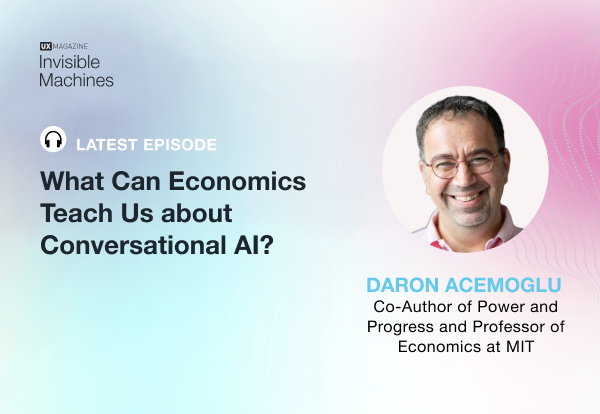- Design, Human factors, Psychology and Human Behavior
Navigating the Creative Landscape.
Article by Adri Mukund
Unveiling the Influence of Cognitive Biases on Design Decision-Making
- The article explores the influence of cognitive biases on design decision-making, outlining various types of biases and offering strategies for mitigating their impact to foster inclusivity and objectivity in design processes.
Share:Unveiling the Influence of Cognitive Biases on Design Decision-Making
Share this link
- February 27, 2024
6 min read

Article by Josh Tyson
Share:Questioning Everything with Jaron Lanier, Prime Unifying Scientist at Microsoft
Share this link
- February 22, 2024
1 min read

- Business UX Leaders, Content Strategy, Marketing and Brand, Media Contour, Social Media Marketing
Knowing your audience, business values, voice tonality, voice refinement, and team trust.
Article by Eva Schicker
5 UX Development Phases to Create Your Brand’s Voice
- The article offers a concise guide to crafting a brand’s voice in five key UX development phases.
- The author emphasizes practical strategies and tools for creating a unified brand identity that connects with customers and builds trust.
Share:5 UX Development Phases to Create Your Brand’s Voice
Share this link
- February 20, 2024
5 min read

Article by Josh Tyson
Share:What Can Economics Teach Us About Conversational AI?
Share this link
- February 15, 2024
1 min read

- Design, Privacy and Data Security
As consumers’ privacy concerns continue to grow, so should our attention to addressing privacy issues as user experience designers.
Article by Robert Stribley
Designing for Privacy in an Increasingly Public World
- The article delves into the rising importance of addressing privacy concerns in user experience design, offering insights and best practices for designers and emphasizing the role of client cooperation in safeguarding user privacy.
Share:Designing for Privacy in an Increasingly Public World
Share this link
- February 15, 2024
9 min read

- Personal and Professional Development, Technology
Article by Josh Tyson
Everything I Really Needed to Know About Technology I Learned on a Skateboard
- The article explores parallels between skateboarding and technology, highlighting lessons learned from embracing motion, failure, and inclusivity in navigating the dynamic landscape of AI and innovation.
Share:Everything I Really Needed to Know About Technology I Learned on a Skateboard
Share this link
- February 13, 2024
7 min read


